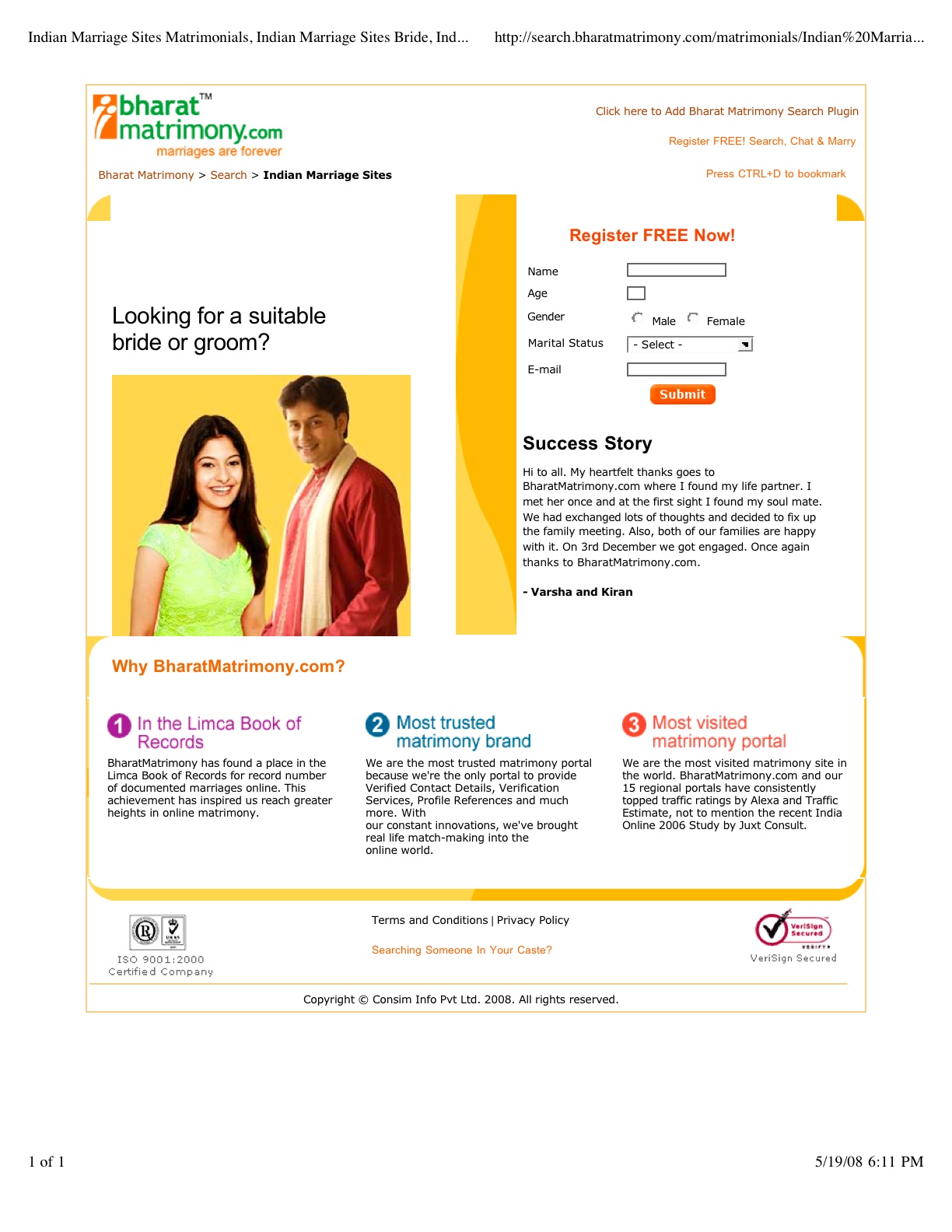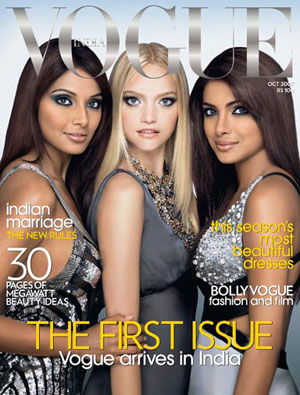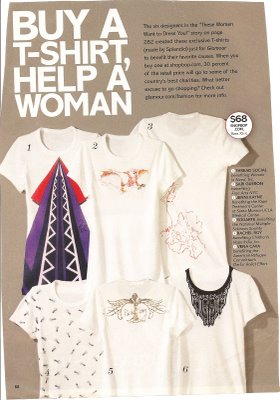A student pointed me to bharatmatrimony.com, a matchmaking website targeting the general Indian sub-continent:

You can choose to search a variety of more specific groups (Hindi, Punjabi, Tamil, etc.). Among other search criteria, you can specify caste and sub-caste.
I did a quick search (I put in “any” for caste) and found that the profiles are publicly available (presumably you only have to pay if you actually want to contact them), and include such information as complexion (one profile said “wheatish”), blood type (??), eating habits (vegetarian or not), horoscope and whether or not the person requires a good horoscope match, the person’s caste and sub-caste, annual income, and their preferences in a partner (they can state a caste and first-language preference but not a complexion preference, from what I can tell).
The website might be useful for any number of discussions–about technology and the increasing global reach of the internet, of modern methods of dating, about what type of information we might think is important at first glance about a person (although in the U.S. I bet many people would say asking about someone’s complexion is inappropriate or racist, I presume we have things on our dating sites that would seem rude in India; also, I’d argue American users of dating website don’t openly ask about complexion but can get that information from photos and so may be judging potential partners on it anyway). This could also bring up an interesting discussion of language–I suspect many students would be horrified at the idea of a “matchmaker,” which implies arranged marriages to some degree, but a “dating service” seems different (even though eharmony and other sites call potential partners “matches”).
The same student also uncovered these anti-dowry posters:



They can be found here. I have tried to find a website for The Sisterhood Collective or the ad agency that supposedly made these posters but have not be able to, so I do not have definitive proof they are real (I have no reason to say they aren’t, only that I’m usually cautious of things that supposedly were displayed in other countries that seem a little too funny/horrific to be true, so I always try to do a little digging if I can. Snopes.com didn’t have anything on it.
One thing that I thought was interesting about the anti-dowry posters was that when I first saw them, the language (“you fucking prick”) made me assume they were directed at men, although when I looked at them again I realized there was no reason they couldn’t be directed at women. If they were meant to target a male audience, it could lead to an interesting discussion of the implication that only men are engaged in patriarchal oppression, ignoring the role that older women (particularly potential mothers-in-law) play in reinforcing dowry and the devaluation of women.
Finally, here’s the cover (found here) of the very first issue of Vogue India, from October, 2007:

Here we see that the image of beauty provided by the magazine to the millions of women in India includes a narrow set of features: light skin, straight hair, stereotypically “European” facial features–and, of course, very, very thin bodies. Compare to this Indian ad for skin-lightening cream for a discussion of standards of beauty and how a generalized “White” ideal of beauty has been increasingly globalized.
Thanks, Kellie G.!

